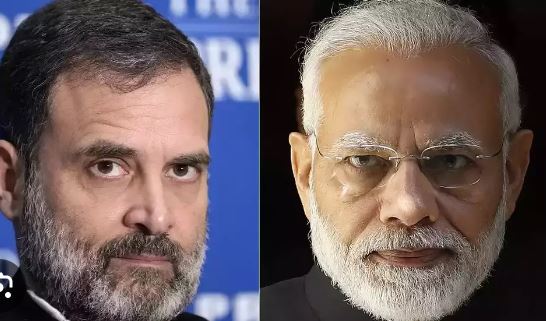Introduction: The Political Stage
In the august corridors of the 18th Lok Sabha, two contrasting speeches by Congress Leader Rahul Gandhi and Prime Minister Narendra Modi illuminated the profound power of political rhetoric. Their discourses, much like the mythical narratives of the Ramayana’s Kishkindha Kand, underscore the enduring potency of symbolism and myth in political discourse.
Kishkindha Kand: A Mythical Parallel
The Kishkindha Kand, a pivotal section of the Ramayana, recounts the tale of Vali, Sugriva, and Ram, steeped in themes of fear, betrayal, and retribution. Vali, the formidable monkey king, misinterprets Sugriva’s actions, leading to a dramatic confrontation facilitated by Ram. This mythic narrative serves as a metaphorical canvas upon which Gandhi and Modi’s parliamentary performances are painted, each invoking mythological and historical references to bolster their political positions.
Rahul Gandhi’s Invocation of Fear
Rahul Gandhi, in an uncharacteristic departure from convention, adeptly employed the symbolism of fear in his speech. Drawing parallels to figures such as Guru Nanak, Jesus Christ, and Shiva, Gandhi crafted a religious imaginary to reframe the opposition’s voice. His invocation of the Lord of Dance, despite attempts to alter camera angles, effectively conveyed a narrative of divine intervention against oppression. This invocation was not merely rhetorical but strategically designed to resonate with a populace familiar with these mythological archetypes.
Narendra Modi’s Response: Grounded in Reality
Contrasting Gandhi’s mythical allusions, Prime Minister Narendra Modi’s oration was grounded in the tangible realities of Indian history and everyday life. Modi eschewed divine invocations, instead presenting metaphors that juxtaposed the Congress’s mythical narratives with the BJP’s factual assertions. His depiction of the Congress as a child mollified after a minor injury underscored his narrative of resilience and practical governance.
Symbolism in Political Discourse
The juxtaposition of Gandhi’s and Modi’s speeches highlights a critical aspect of political oratory: the strategic use of symbolism. Gandhi’s speech, replete with religious and mythological references, sought to personify abstract fears through concrete anecdotes. He recounted stories of domestic violence exacerbated by inflation, the destitution of Agniveer families, the turmoil in Manipur, and the NEET fiasco, all underscoring a pervasive sense of fear.
Modi’s Counter-Narrative: Facts and Figures
Modi’s response, though ostensibly factual, did not refute the underlying theme of fear articulated by Gandhi. Instead, he presented a litany of achievements and developmental milestones, framing the opposition’s dissent as anti-national conspiracies obstructing progress. His invocation of Supreme Court warnings against threats to nationhood and his “warning” to the Congress exemplified a shift from mythological abstraction to empirical evidence.
The Exhaustion of Mythical Narratives
The speeches also signify a broader narrative fatigue. The BJP’s reliance on ancient glories and moral superiority has begun to lose its original power through incessant repetition. Conversely, Gandhi’s appropriation of mythological symbolism indicates that myths are not monopolized but gain their potency through contextual invocation. This dynamic interplay between myth and reality underscores the evolving nature of political rhetoric in contemporary India.
Conclusion: The Enduring Power of Myth and Symbolism
In the grand theater of the Lok Sabha, the speeches of Rahul Gandhi and Narendra Modi exemplify the enduring power of myth and symbolism in political discourse. Gandhi’s invocation of fear and divine intervention juxtaposed with Modi’s pragmatic emphasis on historical and everyday realities reflects the complex tapestry of political narratives in India. As the nation’s political landscape continues to evolve, the strategic deployment of mythological and symbolic references remains a potent tool in shaping public perception and political outcomes.
Summary:
| Key Learning Points | Details |
|---|---|
| Political Symbolism | Both leaders used different types of symbolism to convey their messages. |
| Mythological References | Gandhi used religious and mythological imagery to invoke fear and resilience. |
| Empirical Evidence | Modi grounded his arguments in historical and practical realities. |
| Narrative Fatigue | Repeated mythical narratives lose their original power over time. |
| Evolution of Rhetoric | Political discourse evolves with contextual invocation of myths and facts. |
| Vocabulary | Meaning |
|---|---|
| Inextricably | Impossible to disentangle or separate |
| Adhocism | A policy or method characterized by temporary measures |
| Rigorous | Extremely thorough and accurate |
| Conundrum | A confusing and difficult problem or question |
| Reconciliatory | Intended to placate or pacify |
| Cohesion | The action or fact of forming a united whole |

Sunil Garnayak is an expert in Indian news with extensive knowledge of the nation’s political, social, and economic landscape and international relations. With years of experience in journalism, Sunil delivers in-depth analysis and accurate reporting that keeps readers informed about the latest developments in India. His commitment to factual accuracy and nuanced storytelling ensures that his articles provide valuable insights into the country’s most pressing issues.



